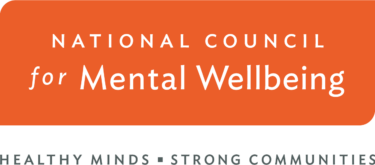Resources
-
2022 Access to Care Survey ResultsMay 31, 2022
Barriers to access may complicate or delay treatment, according to the 2022 Access to Care Survey.
Public Health Report -
2022 Annual Member Insights ReportDec 8, 2022
Utilizing three years of Form 990 data, this report provides resources to better understand community mental health and substance use treatment services.
Report -
2022 CCBHC Impact ReportOct 26, 2022
Read the impact report to see how CCBHCs are changing the mental health and substance use care landscape.
CCBHC Report -
2023 Annual Member Insights ReportAug 2, 2024
The enhanced Annual Member Insights Report: Analysis of Form 990 Data, 2018-2022 and Other Sources is part of the National Council’s continued commitment to support the fiscal health of our members. Utilizing five years of IRS Form 990 data, this report provides our members with benchmarking resources and allows others to better understand the intricacies…
Annual Report -
2024 CCBHC Impact ReportJun 3, 2024
The Certified Community Behavioral Health Clinic (CCBHC) model is delivering the resources our nation needs to transform mental health and substance use care so our communities can thrive.
Integrated Health CCBHC Resource -
988 Playbook for Mental Health and Substance Use Disorder ProvidersApr 20, 2022
Download Temporarily UnavailableSAMHSA, in co-sponsorship with NASMHPD, convened with national partners across critical working sectors involved with 988 to help advance 988 planning efforts at the state and local levels. These national-level meetings brought together states, territories, and tribes; crisis contact centers; public safety answering points; and behavioral health providers…
-
Addendum: Medication Matters: Causes and Solutions to Medication Non-Adherence During Times of DisasterJan 25, 2021
This addendum provides a brief review of challenges with adherence and offers recommendations for improvement during disaster situations such as the COVID-19 pandemic.
Crisis Response Report -
-
American Rescue Plan Act of 2021 Highlights for Mental Health and Substance Use Disorder ProvidersFeb 8, 2022
This document is meant as a guide to the mental health and substance use disorder provisions included in the American Rescue Plan Act of 2021. At the top, we provide high level bullets designed to give you a brief overview.
Public Health Report -
An Overview of Deflection and Pre-arrest Diversion to Prevent Opioid OverdoseFeb 2, 2022
This tool provides an overview of DPAD, including national program models, best and promising practices and financing and sustainability considerations.The National Council for Mental Wellbeing, with support from the Centers for Disease Control and Prevention (CDC), developed a package of resources to support the adoption and implementation of Deflection and…
Workforce Development Report
